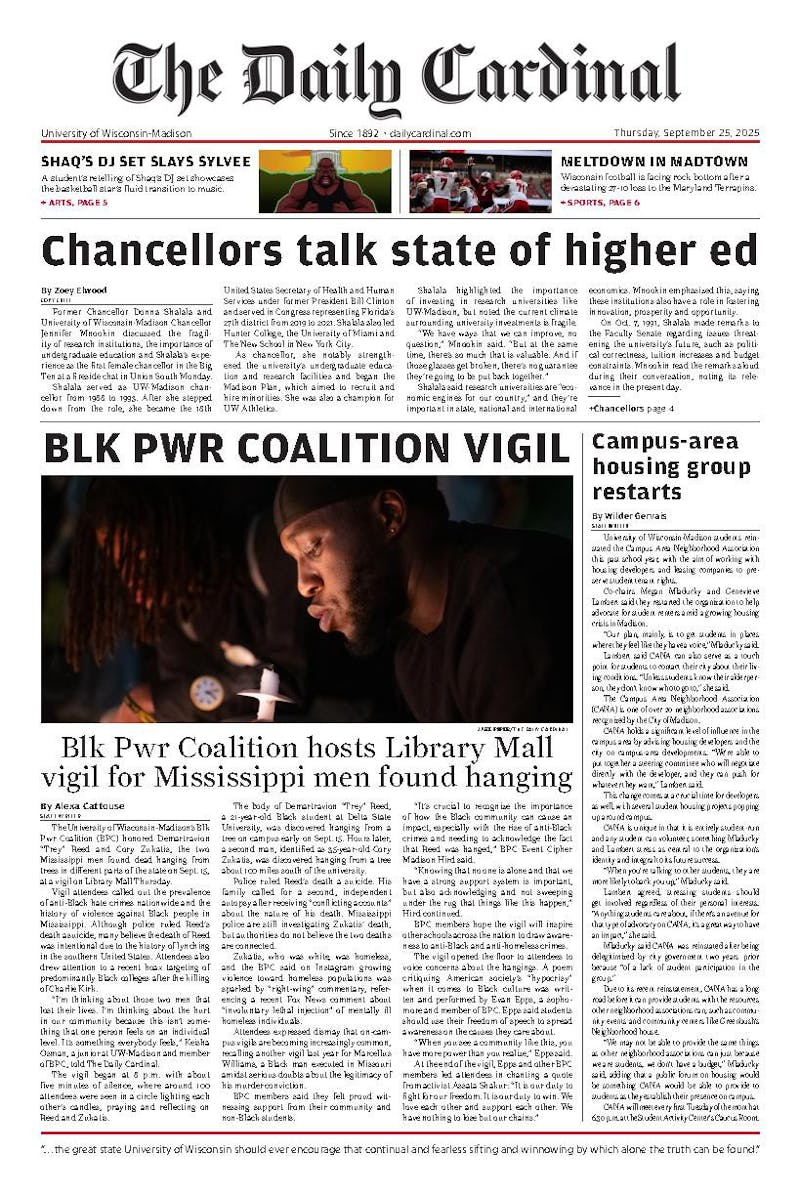I find myself floating beside the picturesque skyline of Chicago, dipping down near Navy Pier just to admire the scenery. On a whim, I decide to travel the road to Madison - one I've driven many times - but never while flying about a mile above the earth. I soar by the familiar sights: Lake Shore Drive, the city of Rockford, John Nolan Drive, and, finally, my apartment here in Madison.
This surreal trip was brought to you by Google Earth.
Released early last summer, Google Earth stitches together an endless database of satellite images, maps and addresses to bring the end-user a very deep representation of the world around them on any scale; be it their neighborhood, zip code or continent. And it's free.
So let's say you're new in town and you need a place to stay, preferably by the Capital. Fire up Google Earth, click the hotels check box, and you're presented with a array of inns to choose from. Click on one and read the linked Zagat survey of a promising bit of lodging, then order a room online at the hotel's website.
Looking for a night on the town? Check the bars/clubs box and watch Madison's countless watering holes light up State Street and Capital Square like the night sky.
The ability to always find a pitcher of beer notwithstanding, Google Earth's most promising feature is its open-source, highly editable nature. \Application programming interfaces"" are available to any programmers who want to employ a Google map for their own purposes.
The technology has been put to good use. In the day's following Hurricane Katrina's landfall, information about the whereabouts of relatives, the condition of homes and other questions regarding specific locations affected by the storm were left as data points on a repurposed Google map of the devastated areas in and around New Orleans.
As new info trickled in about a lost loved one or the damage done to a residence, many of these points were updated. This dispersal of incredibly timely, location- specific information has no precedence and is a poignant example of the power of a ""read/write"" map, a term coined by Mapping Hacks co-author Schuyler Erle.
As we leave the comfortable haven of college life for the real world, Housing Maps, a Google map overlaid with up-to-the-minute real estate information provided by classified-ad hub Craigslist, could aid in the transition. It's an innovative way of checking out prospective neighborhoods without a realtor middleman.
Other novel applications abound - cheap gas prices, traffic info and crime statistics have also been laid onto Google maps.
By letting users ""tag"" latitudes and longitudes with their own data points, Google Earth allows anybody to be an armchair cartographer. In the future, as cell phone technology and continental wireless networks continue to develop, a rendezvous of any kind could be set with virtual, geospatial tags and sent as text messages to the desired party.
With a copy of Google Earth loaded on the cell phone in our pockets, the act of getting lost could go the way of the eight-track. You'll never have to ask for directions again.
Disgruntled gas station attendants everywhere will be thrilled.
Google Earth is redefining the map for the Wikipedia set. No longer just a collection of highways, topography and county lines, man's modern atlas will be an endlessly shifting ocean of personalized data, with every square mile packed dense with information. Start exploring.
Adam Dylewski is a junior majoring in Genetics and is waiting for Google's stock to split so he can get a piece of the action. Letters? Send them to adylewski@wisc.edu.





